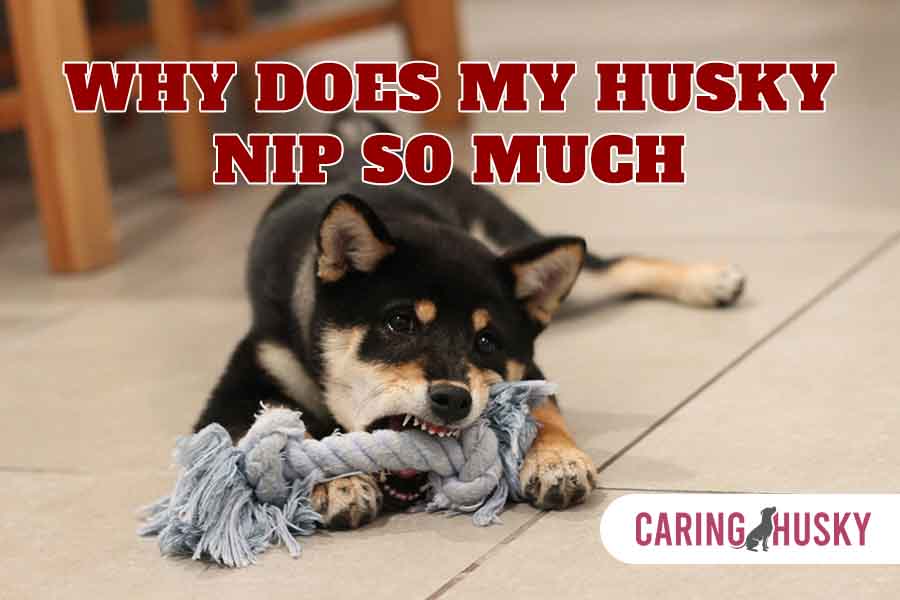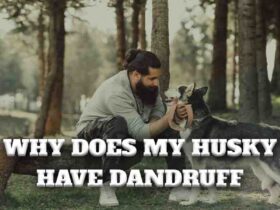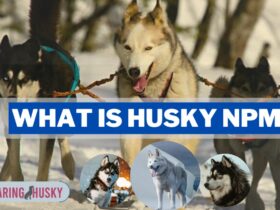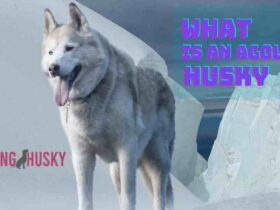The playful nip of a Husky can be a charming quirk, but when it becomes excessive, it can be a cause for concern among owners. Huskies, known for their striking appearance and spirited personality, often express themselves through this behavior. However, understanding the underlying reasons for this nipping is crucial for any Husky owner. This article aims to delve into the ‘why’ behind your Husky’s nipping habits. We’ll explore various factors—from breed characteristics and teething in puppies to attention-seeking behaviors and anxiety—that could be contributing to this behavior. Additionally, the article will provide insights into how to effectively manage and train your Husky to minimize this habit, ensuring a happy and harmonious relationship between you and your furry companion.
Why Does My Husky Nip So Much?
Huskies often nip due to their high energy and playful nature, combined with their instinctual behaviors like herding. Puppy teething, seeking attention, or expressing excitement or anxiety can also lead to nipping. Proper training, exercise, and socialization are crucial in managing this behavior, helping your Husky learn appropriate ways to interact and express themselves.
Common Reasons Why Huskies Nip
Huskies are known for their energetic and playful demeanor, and nipping is a common behavior among them. Understanding the reasons behind this behavior can help in effectively managing and reducing it. Here are some common reasons why Huskies nip:
- Puppy Teething And Playfulness: Young Huskies, like all puppies, go through a teething phase where they experience discomfort in their gums. Nipping can be a way to alleviate this discomfort. Playfulness is a natural part of a puppy’s development. Huskies, in particular, are very playful and may use their mouths in play, leading to nipping.
- Herding Instincts: Huskies have a background that includes working in packs and sometimes herding. This instinct can manifest as nipping, especially when they are excited or trying to ‘herd’ humans or other animals.
- Attention-Seeking Behavior: If a Husky learns that nipping attracts attention, even if it’s negative, they may continue this behavior. It’s a way for them to interact or show that they need something, like food or exercise.
- Overexcitement Or Anxiety: When Huskies get overly excited or anxious, they may nip as a way to express their emotions. This can happen during playtime, when greeting people, or in stressful situations.
- Lack Of Training And Socialization: Without proper training and socialization, Huskies may not learn appropriate ways to interact with humans and other animals. This lack of guidance can lead to nipping as a default behavior.
- Boredom Or Lack Of Exercise: Huskies are a high-energy breed that requires a lot of exercise and mental stimulation. Without it, they may resort to nipping as a way to release pent-up energy or alleviate boredom.
- Health Issues: Sometimes, nipping can be a sign of an underlying health issue. Pain or discomfort can cause a Husky to nip if they’re handled in a way that exacerbates their condition.
How Nipping Can Be A Way To Seek Attention?
Nipping as a form of attention-seeking behavior in dogs, including Huskies, can occur for several reasons:
- Learning From Past Experience: Dogs are quick learners and often repeat behaviors that have previously earned them attention. If a Husky has nipped in the past and received any form of attention (positive or negative), such as being talked to, petted, or even scolded, it might learn that nipping is an effective way to engage its owner.
- Lack Of Adequate Interaction: If a dog feels it’s not getting enough social interaction or stimulation, it may nip to initiate interaction. Huskies, being social and energetic dogs, require ample interaction with their owners. Nipping can be a way for them to say, “Notice me” or “Play with me.”
- Boredom Or Understimulation: Huskies that are not sufficiently stimulated through physical exercise and mental engagement may resort to nipping as a way to entertain themselves or release pent-up energy.
- Mimicking Playful Behavior: In the wild, young dogs nip at each other as a form of play. A Husky might replicate this behavior with its human family, especially if it hasn’t been trained to understand that this is not acceptable behavior with humans.
- Testing Boundaries: Especially in younger dogs, nipping can be a way of testing what is allowed. Puppies, in particular, use their mouths to explore the world, which includes understanding the reactions of their owners to different behaviors.
- Expressing Needs: Sometimes, nipping can be a way for Huskies to communicate their needs. This could be a demand for food, a signal that they need to go outside, or a request for a favorite toy.
Training And Behavior Modification Techniques
Training and behavior modification techniques are essential in teaching your Husky not to nip and in encouraging more appropriate behaviors. Huskies are intelligent and responsive dogs, making them generally receptive to training. Here are some effective strategies:
- Basic Obedience Training: Commands and Consistency: Teach basic commands like ‘sit’, ‘stay’, ‘come’, and ‘leave it’. Consistency in training is crucial. Positive Reinforcement: Reward good behavior with treats, praise, or playtime. Avoid punishment as it can lead to fear and aggression.
- Bite Inhibition Training: Controlled Play Sessions: During play, if your Husky nips, let out a yelp or say “Ouch!” in a firm tone, then stop playing immediately. This mimics how puppies learn from their littermates and teaches them that nipping leads to the end of fun activities. Redirect Chewing: Offer them appropriate chew toys to redirect their nipping tendency towards a more suitable outlet.
- Socialization: Expose your Husky to different people, animals, environments, and experiences. Well-socialized dogs are generally more relaxed and less likely to nip out of fear or anxiety.
- Exercise And Mental Stimulation: Provide adequate physical exercise daily. Huskies need vigorous exercise to burn off their energy. Engage them in mental activities like puzzle toys, training exercises, or scent work to keep their minds active.
- Impulse Control Exercises: Teach your Husky to control its impulses through exercises like ‘wait’ for food, or ‘stay’ commands. This helps in managing their excitement and reduces nipping.
When To Seek Professional Help?
Knowing when to seek professional help for your Husky’s nipping behavior is important for both the well-being of your dog and the safety of those around it. Here are some scenarios where consulting a professional would be advisable:
Persistence Despite Training: If you have consistently applied training and behavior modification techniques without success, it could indicate that the nipping issue is more complex and requires professional intervention.
Aggressive Behavior: If the nipping is accompanied by other signs of aggression, such as growling, baring teeth, or lunging, it’s essential to consult a professional. Aggression can escalate and become dangerous if not properly addressed.
Change In Behavior: Sudden changes in your Husky’s behavior, including increased nipping, can be a sign of underlying issues like pain, fear, or anxiety. A professional can help determine the cause and provide appropriate solutions.
Nipping Causes Injury: If the nipping leads to bruises, scratches, or more serious injuries, it’s critical to seek professional help. This level of intensity may require more specialized intervention.
Fear Or Anxiety-Related Nipping: If the nipping is related to fear, anxiety, or phobias (e.g., loud noises, strangers), a professional can help with desensitization and counterconditioning techniques.
Tips For Daily Routines To Prevent Nipping Behavior
Establishing a consistent daily routine is crucial in preventing nipping behavior in Huskies. A well-structured routine not only meets their physical and mental needs but also provides a sense of security and predictability, which can significantly reduce undesirable behaviors like nipping. Here are some tips for daily routines:
- Regular Exercise: Huskies are high-energy dogs that require plenty of exercises. Include at least one long walk or run each day, combined with other activities like hiking, playing fetch, or agility training. Vary the exercise routines to keep them mentally stimulated and physically satisfied.
- Mental Stimulation: Incorporate training sessions into the daily routine. Practice obedience commands or teach new tricks. Provide puzzle toys or interactive feeders to keep their mind engaged, especially when left alone.
- Consistent Feeding Schedule: Feed your Husky at the same times each day. Consistency in feeding can help regulate their overall behavior. Consider using feeding time as an opportunity for training, such as making them sit and wait before eating.
- Scheduled Playtime: Set aside specific times for play. This not only helps in expending energy but also in building a stronger bond between you and your Husky. During play, use toys instead of hands to prevent nipping. If nipping occurs, stop the play immediately to teach them that nipping is undesirable.
- Positive Reinforcement: Praise and reward your Husky for calm and non-nipping behavior. This can reinforce good behavior patterns. Avoid negative attention or punishment as it can exacerbate the issue.
- Socialization And Interaction: Regularly expose your Husky to different people, animals, and environments to improve their social skills. Encourage gentle interactions, especially in situations where they might feel the urge to nip.
- Quiet Time Or Nap Time: Huskies also need downtime. Ensure they have a comfortable, quiet space for rest. Overstimulation can lead to nipping, so balance activity with relaxation.
- Routine Health Checks: Regularly scheduled veterinary check-ups are essential to ensure your Husky is healthy. Sometimes, health issues can contribute to behavioral problems.
- Grooming Routine:Regular grooming sessions help in building trust and reducing anxiety. Brushing, nail trimming, and dental care can be bonding experiences and teach your Husky to be handled without nipping.
- Crate Training: If crate trained, use the crate as a safe space for your Husky to retreat when they need a break or during times of the day when they need to be calm.
Summary
Nipping in Huskies is a common behavior influenced by factors like breed characteristics, teething, herding instincts, and attention-seeking. It’s important to distinguish playful nipping from aggressive behavior. Effective training strategies include basic obedience, bite inhibition, and providing ample exercise and mental stimulation. Consistent routines, positive reinforcement, and socialization play crucial roles in managing this behavior. If nipping persists or escalates, especially with signs of aggression, seeking professional help is advisable. Understanding and addressing the root causes are key to reducing nipping in Huskies.
FAQ’s
Why Does My Husky Nip So Much While Playing?
Nipping during play is common in Huskies due to their playful and energetic nature. It can also be a remnant of their puppy behavior, where nipping was a part of exploratory play.
Why Does My Husky Nip So Much At Night?
Nipping at night might be due to pent-up energy or anxiety, especially if they haven’t had enough physical activity during the day. It could also be a way to seek attention or indicate a need, like going outside.
Do Huskies Bite Their Owners?
Huskies, like any dog, can bite, but it’s not typical behavior for the breed if they are well-trained and socialized. Nipping is more common and often occurs during playful interactions or as a form of communication. Aggressive biting is usually a sign of fear, anxiety, or improper training.







Leave a Reply